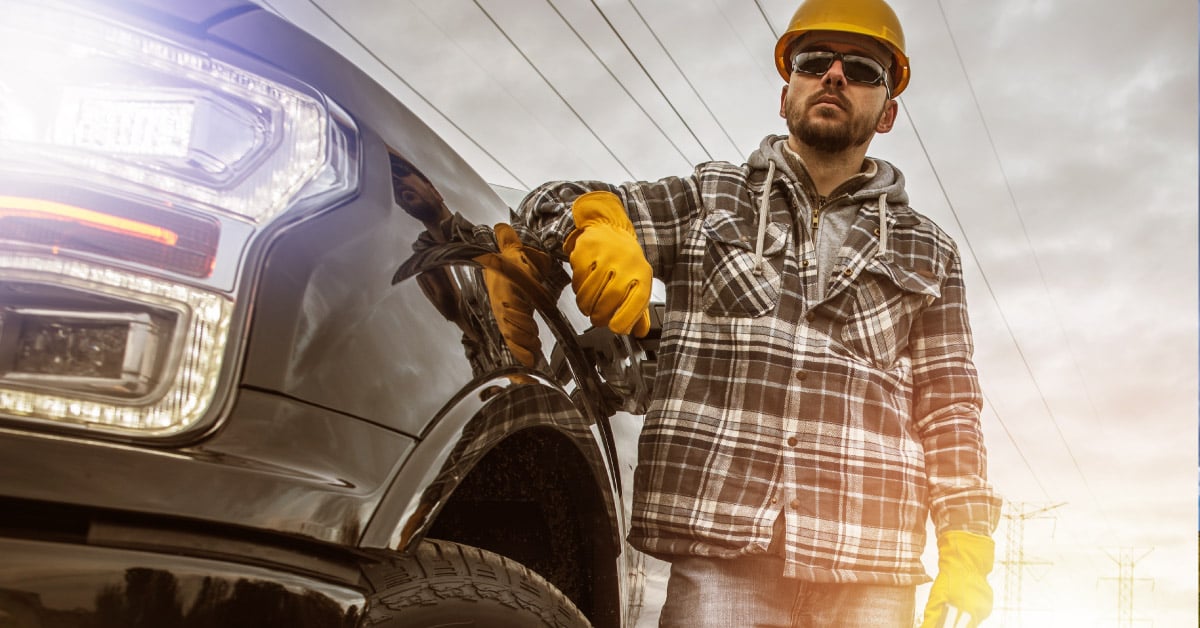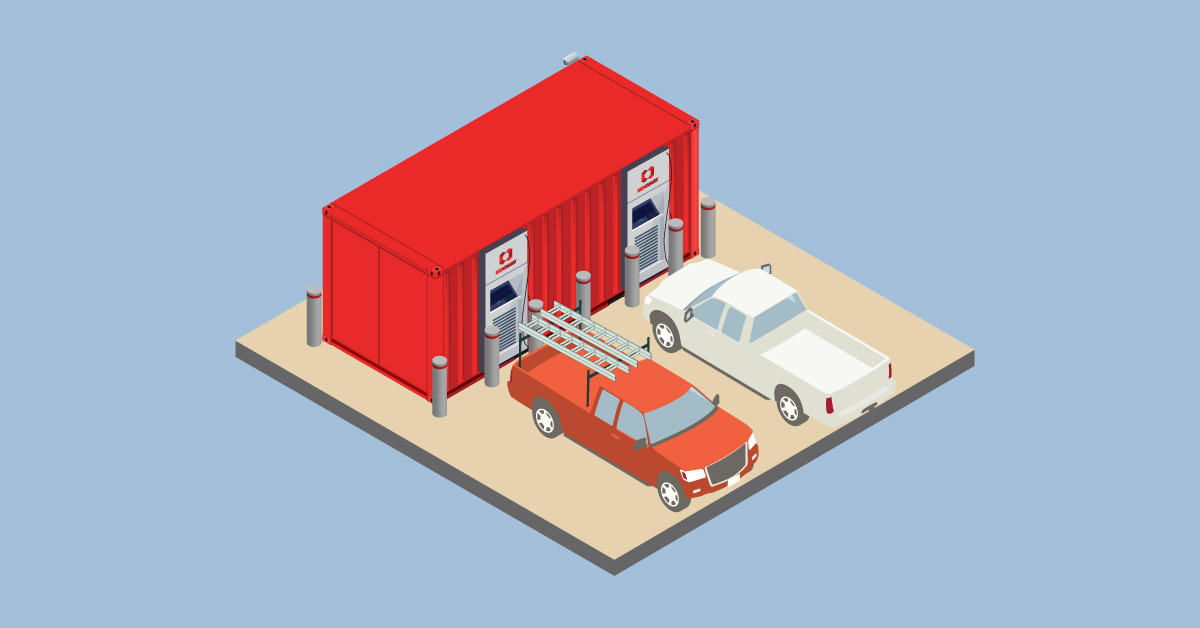Types of Buildings | Industries | Design and Engineering | Renewable Energy
How to Charge Your Electric Vehicle (EV) - Work Edition


If you’re thinking of buying an EV, or electric vehicle, for your business, you might think your days of filling up are over. Buying an EV ends your days of stopping at the gas station, but you will still need to “fill up” – now, with electricity. Some immediate questions come to mind.
How much electricity does an EV need? Where do you get electricity for an EV?
Today, an EV battery holds somewhere between 45 kWh and 100 kWh for the sedans and small SUVS that are available. In this example, if you had a 1 kW power supply, that means you would have to plug in for 45 hours to fully charge the smaller battery in that example.
While impractical, even a basic wall outlet can provide between 2 and 5 kW of power, depending on the breaker size. This is called Level 1 charging, and it would charge your company car just like it charges your laptop or phone. It involves AC power coming from the wall, which your EV converts to DC power and then sends to the battery. It is convenient because you can run an extension cord from home, at work, or wherever you are. However, the average EV would need one to two days to fully charge using this method. We rarely have that kind of time! But, it can work in a pinch if your company car is going to sit at the office or at a customer's location for an extended time.
Electric Vehicles and Level 2 Charging
With a little upgrade to your house or garage, you can upgrade to Level 2. Level 2 involves a 220v outlet, much like a clothes dryer uses. The 220v outlet is coupled with a 40- or 80-amp breaker to provide up to 19 kW of power. This is the standard home charging system most EV companies recommend with the purchase of an EV. Like Level 1, this is AC power and is already in your home, though likely not yet wired to your garage or parking space. This is perfect for your company car if it needs to charge at your home overnight.
EV Charging on the Road – DC Fast Charging
But what if you are on the road? Or, what if you have a fleet of EVs you need to charge fast?
This is where DC fast charging is necessary. These chargers start with DC power, so there is no conversion necessary, like in the previous two examples. DC fast charging provides dramatically more power than Level 1 or 2, starting at 50 kW and going as high as 350 kW.
The emerging consensus, though, is that 150 kW is about the right amount of power and a desirable speed of charging for most drivers. It is also about as much power as current EVs can take and many are limited to lower rates to protect the battery and components.
Most EV drivers today who use DC fast chargers do not “fill up” their battery, however. A typical charging session today is a driver purchasing ~40 kWh, which equates to about 120 miles of range. This allows the driver to finish their planned driving for the day and make it home for charging overnight. At 150 kW, this charging session lasts 15-20 minutes. If a driver needs only 50 miles of range or so for the rest of the day, the charging session can be much shorter.
Conversely, if the driver is on a road trip, this is a great chance to stretch their legs, grab a bite to eat, and rest while they fill their battery to 80% or more. These DC fast chargers can be hard to find, though, as they are expensive to develop and take a long time for construction and high-voltage grid connections.
A Modular Charging Station Option
One DC fast charging option is the ModEV charger from RedGuard. ModEV is a container-based unit that can charge up to four EVs at once, at 150 kW each. Utilizing a battery buffer system, the ModEV DC fast charger can provide 150 kW charging using a much smaller connection to the grid and can be deployed and hooked up much faster than typical construction for other options. It comes with included credit card readers, user interface screens, security cameras, and exterior lighting.
 Modular in nature, all work is completed before it leaves the factory, which means that once it’s delivered and connected, it’s ready to operate in a day. Potential sites for the charging stations have far less prep work to put the charging station in place. The units can be placed on existing concrete or other level surfaces, keeping in mind an area to accommodate a 20 ft container, and traffic flow.
Modular in nature, all work is completed before it leaves the factory, which means that once it’s delivered and connected, it’s ready to operate in a day. Potential sites for the charging stations have far less prep work to put the charging station in place. The units can be placed on existing concrete or other level surfaces, keeping in mind an area to accommodate a 20 ft container, and traffic flow.
Moving away from traditional thinking, the ModEV could be installed at any business that provides a service to travelers. Travel plazas along highway rest areas already have restaurants, retail shops, gas stations, and roadside hotels; naturally, these are all possible locations for DC fast charging. And, as EVs become more common, the prevalence of DC fast charging stations will likely become more commonplace in neighborhoods too, which means that practically any business could host a ModEV charging station – including yours.
Any entrepreneurial-minded business owner who wants to draw consumers who will stick around for at least 15 minutes, can inquire about the RedGuard ModEV Charger.
Are you a business owner, or do you know a great potential location that could benefit from a ModEV charging station? Download our informational PDF.
Austin Gillen
Austin has been in Market Development for RedGuard since 2016. His focus is on new and emerging technologies in an effort to diversify RedGuard’s product offerings.


